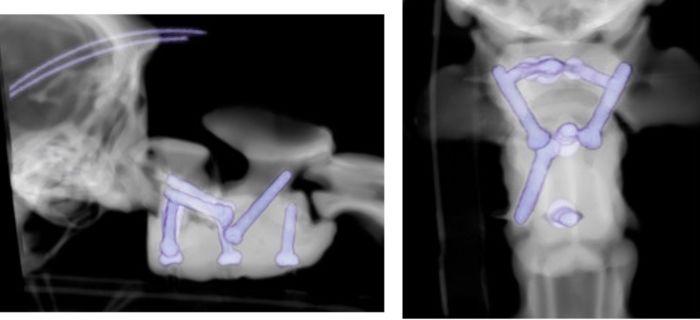3D Printed Spinal Implants Restore Mobility to Paralyzed Puppy
3D Printed Spinal Implants Restore Mobility to Paralyzed Puppy
In an impressive feat of veterinary medicine and engineering in Chester, UK, a six-month-old Cockapoo named Arthur has made a full recovery from paralysis and regained his ability to walk thanks to advanced 3D printing technology. The once-paralyzed puppy’s recovery was made possible by a collaboration between Chestergates Veterinary Hospital and Fusion Implants, who worked together to design 3D printed spinal screws and surgical cement to stabilize Arthur’s spine.
Arthur’s condition was first recognized when he suddenly collapsed and was unable to move, his limbs becoming weak and unresponsive. His owner, Natalie, rushed him to a local vet, where the prognosis was grim. Determined to save her beloved pet, Natalie then took Arthur to Chestergates Veterinary Hospital. Here, a team of expert veterinary neurologists led by surgeon Rocio Orlandi conducted MRI scans and X-rays, revealing a severe instability between Arthur’s first and second cervical vertebrae. This instability was compressing his spinal cord, leading to paralysis.

The team at Chestergates quickly devised a plan, partnering with Fusion Implants in Liverpool to create custom 3D printed spinal screws and surgical cement tailored to Arthur’s condition. “Arthur’s condition was very serious, as these bony abnormalities could potentially be life-threatening due to their proximity to the brainstem,” Orlandi explained. “The use of 3D printed technology enhances the accuracy of this complicated surgery, significantly improving Arthur’s prognosis.”
Prior to the surgery, Arthur was hospitalized and fitted with a body brace to prevent further damage. A week later, he underwent a meticulous four-hour operation where the 3D printed components were carefully implanted into his spine. The surgery was a success, and Arthur’s road to recovery began. “Five hours later, I received the call he’d made it through. He was discharged three days later, tail wagging. We were so pleased, but having such a poorly dog was scary. He had a brace from stomach to head, was unable to use his limbs, and needed 24-hour care.”
Just three weeks later, Arthur could take his first steps alone, though he still needed more time to recover. Arthur’s rehabilitation was marked by a comprehensive physiotherapy regimen, which facilitated his return to mobility within three months of the surgery.
Arthur’s story is just one of many that showcase the use of 3D printing in veterinary medicine, as the technology is being increasingly adopted for advancements in veterinary surgical procedures and prosthetics.